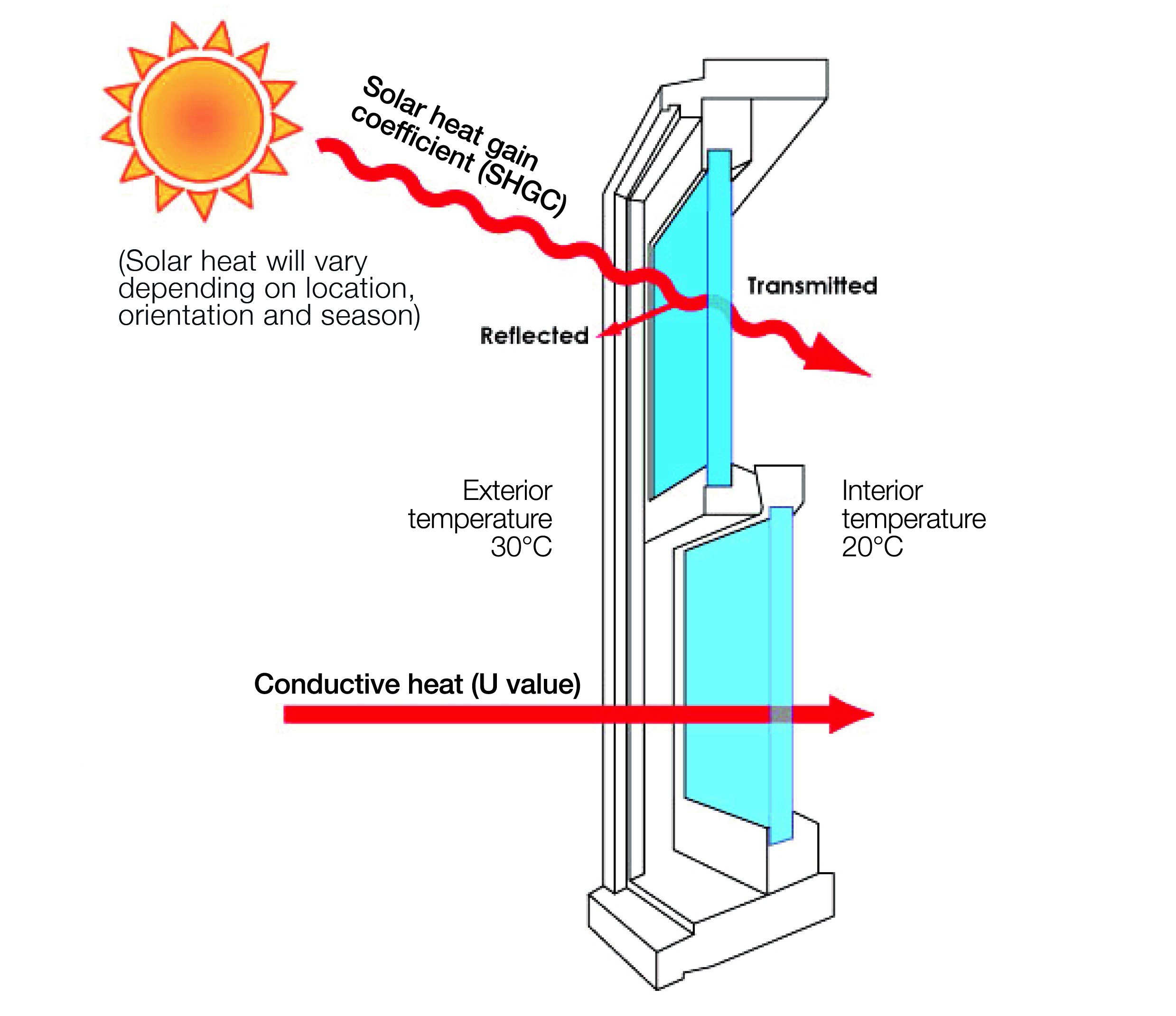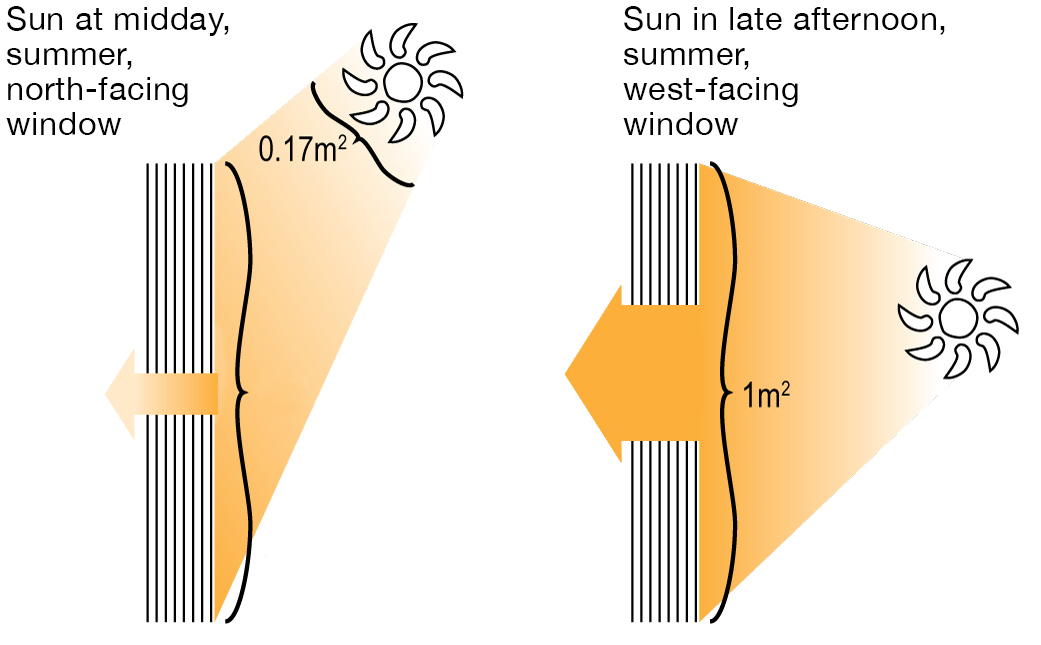What type of glazing is best for your home?

Key properties of glass
Source: Adapted from the Australian Window Association
Are you looking to upgrade your current windows and doors to something more energy-efficient?
Look no further than glazed windows, doors, and skylights. So, what exactly is “glazing”?
Glazing refers to the glass and frames in windows, external doors and even skylights. This type of glass has a significant effect on thermal performance. For example, up to 40% of a home’s heating energy can be lost and up to 87% of its heat gained through standard windows.
Improving the thermal performance of your home’s glazing will improve comfort, reduce energy consumption and lower energy costs.
The U-value (or thermal conduction) measures how well glass & frames conduct heat from one side to another.
On the other hand, the Solar Heat Gain Coefficient (SHGC ) tells us about transmission rates for sunlight through different types and combinations found in windows or doors, which can help regulate temperature levels within rooms.
There are many options available so we prepared this user-friendly guide to make sure you know what will work best for you!
Why is glazing important?
Glazing is an amazing way to let in light and fresh air while connecting your home with the outdoors. It also makes it more comfortable, which means you’ll be able enjoy living spaces that are just as beautiful on interior design.
Improperly designed or installed window glazing can be a major source of unwanted heat gain in the summer and significant loss during the winter. Since up to 87% of your home’s heating energy is gained through windows, it’s essential that you improve their thermal performance. This could help you save on cost while reducing greenhouse gas emissions.
The quality of your home will greatly improve with investment in energy-efficient glazing. Not only does it reduce annual heating and cooling costs, but an initial upgrade to windows or skylights can also cut down on peak load requirements for air conditioners which are costly when you need them most!

Solar gain varies according to the sun’s angle of incidence
Source: Adapted from Association of Building Sustainability Assessors
Glazing choices
There are commonly three types of glazing to choose from. There’s no right choice, but rather the best choice in regards to your preference, budget, and/or home project goals. Choosing specific types of glazing will make a difference in how much you could increase energy efficiency in your home. The type of glazing you choose will provide different levels of heat retention or prevent it from coming in, as well as have varying impacts on daytime lighting, noise control, maintenance and security.
Single Glazing

Double Glazing and Triple Glazing
Double and triple glazing, or insulated glass units (IGUs), can be an effective way of reducing energy costs. These are combinations between two or more layers that have been sealed into frames with gaps in between each sheet; multiple cavity designs allow for better transmission rates when compared to single-layer counterparts.
Keep in mind that the energy performance of IGUs also depends on the properties of each layer of glass.
Different glass types, such as clear and low-e glass, can be put together in an IGU. Various combinations of clear, toned, and low-e glass can achieve a wide range of SHGC and VLT values to suit your performance needs.
Other factors include:
- The contents of the cavity. IGU cavities can be filled with low-conductivity gas such as argon.
- The width of the cavity is important to consider when designing for thermal performance. A 6-18 mm gap will give you better U values, with 12 millimeters usually considered ideal.
- The cavity must be dry and well sealed to prevent moisture from getting in. Manufacturers have special rooms for IGU assembly, where they install argon gas instead of air so that any excess will stay away from the desiccant (drying agent).
Consider uPVC window frames for added benefits
If you want to increase energy efficiency and save even more money on electric bills, you should consider installing uPVC window frames for your double glazed windows. UPVC is an excellent material to use as window frames because it’s a low conductor of heat, meaning that there will be less heat loss.
Weather factors in Australia
Hot climates
In hot climates such as Darwin and from Brisbane north on the east coast, the most important factor in selecting the right type of window for your home is its Solar Heat Gain Coefficient (SHGC). This number accounts for how much energy it absorbs from sunlight before radiating that same amount back out into your living space, which can lead to uncomfortable conditions such as excessive temperatures during the summer months.
If you want passive solar gains, make sure that they’re only obtained from north-facing windows and not east or south-facing ones! West-oriented panels don’t have very high SHGC so these types of glass should work well with what’s going on inside as well by getting proper shading across all sides where necessary.
Temperate climates
The ideal windows for Sydney, Perth and Melbourne are those that have a high SHGC in the winter but allow plenty of ventilation during summer. These locations need to be equipped with fixed or moveable shading designed so as little heat can escape through them when it’s hot outside while allowing light into your home without any problems.
In the summertime, it is important to have deep overhangs or active shading devices on your windows so that you can avoid harmful sunlight early in the day. It’s also crucial not to forget about south-facing glass when building near tropical zones since they will experience higher solar heat gains than more temperate locations do at their poles.
Cool climates
The key driver of annual energy consumption due to glazing in Melbourne, Hobart and Canberra is the U value. Passive solar gains from high SHGC can significantly reduce heating demand during day time as well into evening hours when it’s cold outside but you don’t want your home too chilly!


